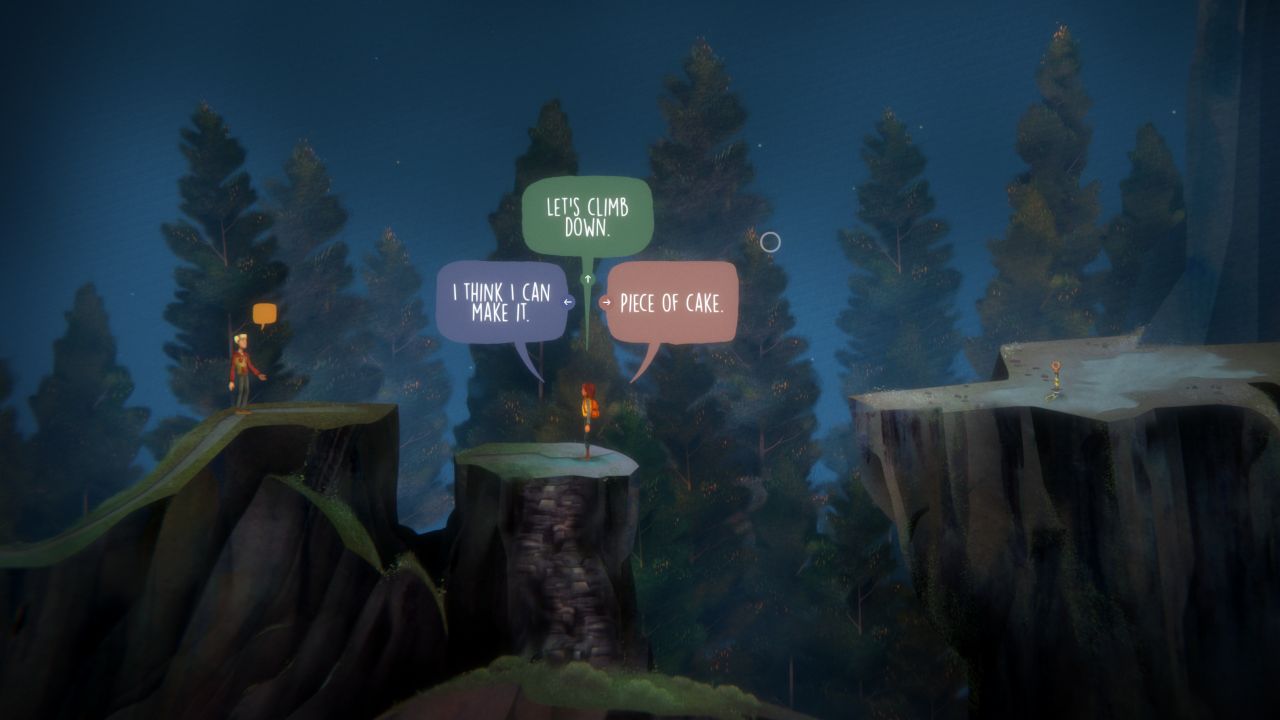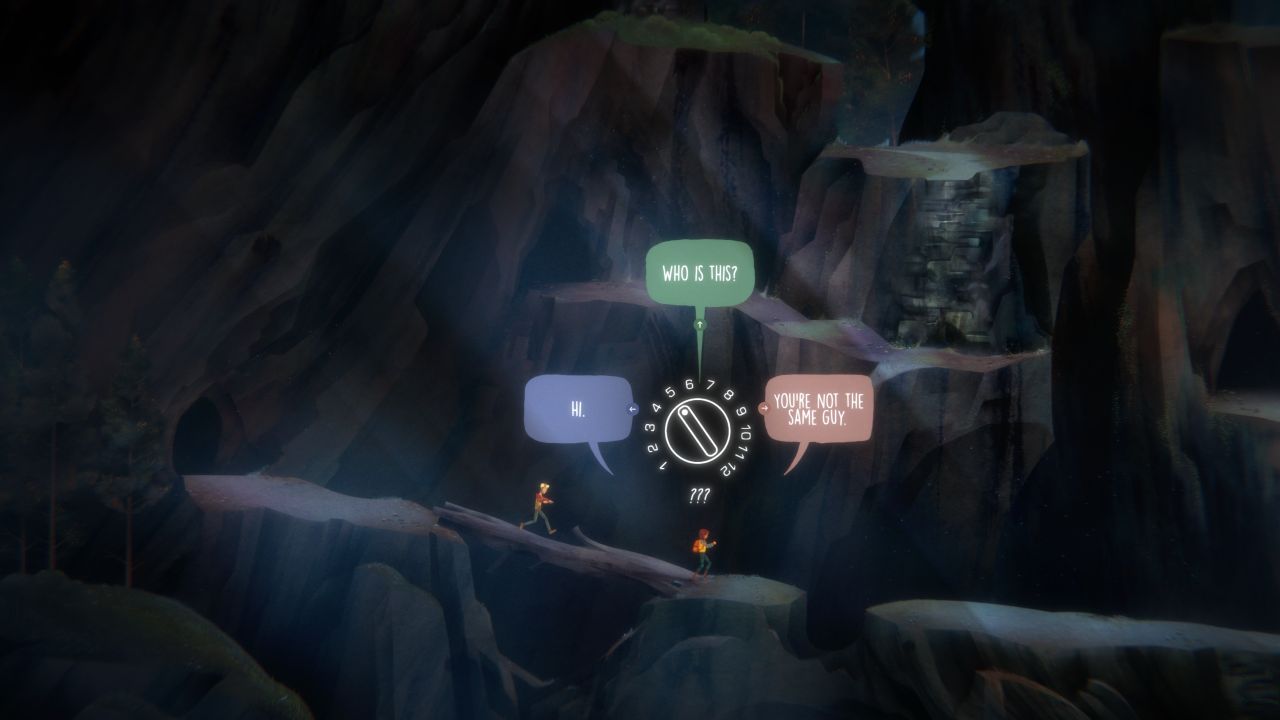During a recent hands-off preview for Lost Signals, where Night School Studio director and co-founder Sean Krankel, lead writer and studio co-founder Adam Hines, and lead developer Bryant Cannon walked us through the first 30 minutes of the game, it’s clear that Oxenfree II is very much building on all the good stuff from Oxenfree I. We also absolutely did not discuss Night School Studio being bought by Netflix, which was announced the same day I saw the game. It’s a move that makes sense in that - as Graham noted - Night School’s games are suited to breaking out to a non-gamer audience, but still feels comparable to the brain stutter I get when I remember happy, homely, eco-family brand Innocent Smoothies is now 90% the property of Mr. Coca-Cola. Not that I begrudge Night School Studio their success. I like their games, although I was never as much of an Oxenhead as everyone else - I preferred the game they did next: After Party, another 2D talkie-walkie story about escaping hell and/or helping the devil deal with his alcoholism. Oxenfree II is a predictable game to make, given the success of the original, and it’s sticking to the established Oxenstyle. Most of the original dev team are back, says Krankel, including composer Scntfc working on what Krankel calls the “analogue-synth vibe” of the game’s soundscape. In Lost Signals, however, rather than playing a teen having a classic unsupervised beach party that goes awry, you play as an adult. Riley is an environmental researcher investigating the strange signals that are causing havok in a seaside town called Camena (think TVs going on the fritz, we’re told). These signals played a key role in Oxenfree, and in fact the same time rifts that you experienced in the first game are the source of the bother this time around. A masked cult called Parentage is trying to open more rifts to pull something out. Riley joins forces with Jacob, a friend of hers from high school, to try and stop said cult. The section I saw took place about about an hour into the game, where Riley and Jacob have become entangled with Parentage and are on a mission to place transmitters on high points around their environment to interrupt the cult’s nefarious plans. They descend into a network of caves to get around an impassable cliff, and use a time rift to traverse a section that’s blocked. Hines says that there are a “lot more ins and outs to the locations in the sequel, and no real right way,” adding that the caves are especially complex. There’s an interesting interplay between your actions and the environment. Was it Riley and Jacob doing this in the future that caused this old mine to collapse in the first place? Does it even matter? Should Ashton Kutcher have read those journals? Lost Signals will feature the consequences of your accumulated actions over the game, as the original Oxenfree did, including conversational choices. Riley and Jacob’s chats are free-flowing and natural, as expected, but I enjoyed the dynamic between these 30-year-olds a lot more than the teenagers of yesteryear (which is classic me, in fairness). Jacob is more cautious while Riley is more of an action hero, at least in her attitude towards jumping potentially dangerous gaps. Some of the decisions in Lost Signals are about taking the quicker, more hazardous route and waiting for Jacob to catch up, or going slow and steady along with him. You can banter about gravity with him, or scare him when you enter the dark cave for the first time. “These new characters are much older than those in the original Oxenfree, having left school long ago. But everyone goes through major changes at different points,” says Hines, later making the point that you can have “a coming-of-age story no matter how old you are”. You also get calls on your radio from strangers, which you can pick up or ignore, and these, too, will affect your story - especially since some of these callers might not even be real, or at least not in your present reality. During the preview, we saw Riley answer a call from a guy called Nick who mentioned he’d lost his backpack (which we found!) but also a mysterious, raspy voice that said, “My mom… used to tell me stories - that’s why I’m calling. ‘Cause one of the stories was about tonight. And the things that are going on.” Creepy. At one point, Riley went through a sort of reality glitch and caught a glimpse of what looked like her own body floating in an underground pool. Also creepy. Despite the obvious links, though, the original Oxenfree isn’t required reading. “There is some connective tissue between the two,” explains Krankel, talking about how Oxenfree and Oxenfree II are set geographically close together and experience the same supernatural happenings, “but we wanted to make sure that this game, from the jump, you could play through and understand and fall in love with Riley and this cast of characters, without knowing much from the original game.” Hines says that they wrestled internally with wanting to make this game feel like Oxenfree, but at the same time expanding on that world and its characters. Filtering the “weird supernatural rules of the Oxenfree world” seen through a new cast was key to that. Though Hines is open in saying that the overall plot is similar to the first game, the hope is that it’s still a new story told in a new way. For me, the most interesting thing about Oxenfree was how it juxtaposed a small human drama against the huge and supernatural. That Oxenfree II seems to be exploring the latter a bit more makes me curious about what Riley and Jacob’s ultimate deals are. More importantly, as a woman in her 30s, I’m intrigued to see just what Night School Studio think a woman in her 30s having a coming-of-age moment looks like. It’s too early to say what the future holds for this developer in their post-Netflix world, but in the here and now, at least, everything seems to be very much business as usual. If this early glimpse at Oxenfree II is anything to go by, we’re looking at more classic Night School when it launches next year.


